Safavid number games in Sarajevo
‘Safavid Carpets from the Mahan Shrine—Sarajevo Fragments’ is on show at the National Museum of Bosnia and Herzegovina Williamsburg until February 2019. In HALI 195 of Spring 2018, Fatima Žutić reports on the long-unseen but often-mentioned 17th-century Kerman ‘vase technique’ carpet fragments, revealed to the public in February of this year. The following is an abridged extract from the article:
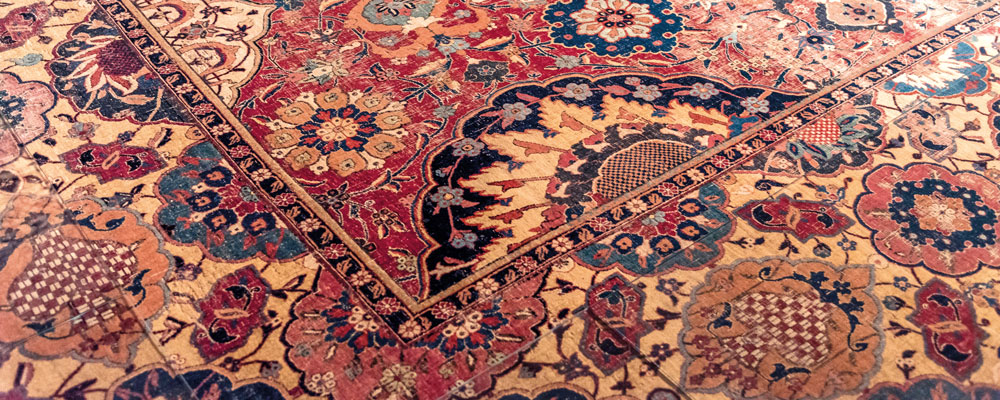
Detail of the primary Sarajevo shaped ‘vase-technique’ carpet section, the largest part. National Museum of Bosnia Herzegovina, 2111/I, a
‘These seven fragments belong to three very similar carpets, almost identical in technique and colour, with only minor differences in design. All three are shaped, woven to fit around the cenotaph or tomb in the centre of the shrine… In Percy Sykes’ 1902 book he wrote that during his visit to Mahan he saw the carpet still in the shrine: ‘The floor was covered by a fine old carpet with large medallions presented to the shrine by Shah Abbas, which has since been bought by M. Rakovzsky.’ He also states that the carpet was finished in 1067 ah (1656 ce).
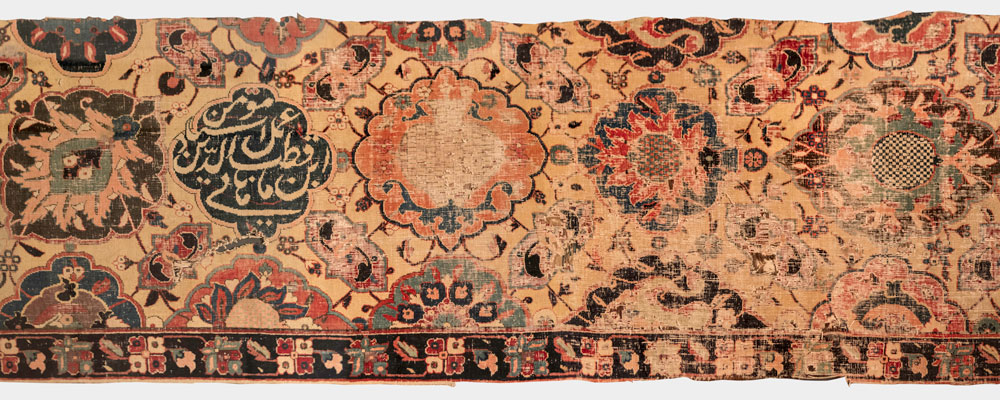
Fragment from the primary Sarajevo shaped ‘vase-technique’ carpet, fitting to the left side of the large fragment. National Museum of Bosnia-Herzegovina, 2111/I, b
It was Pope who emphasised that, although there were significant design differences in the Persian classical carpet type to which the Sarajevo fragments belong, they could be classified as a coherent group due to technique and structure. Lacking a better name, in 1976 May Beattie proposed ‘vase-technique’, and the term has persisted. Experts agree that they were woven in and around the city of Kerman in south-central Iran in the 17th century.
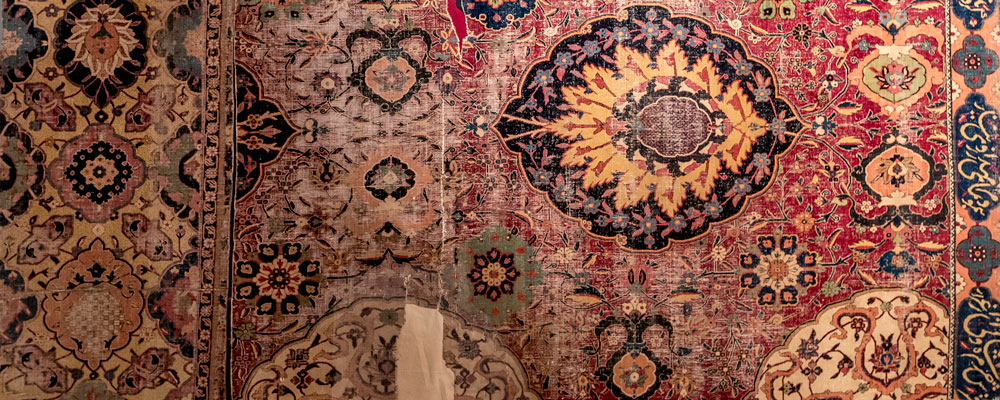
Detail of the second Sarajevo ‘vase-technique’ carpet, made up of three rectangular fragments. National Museum of Bosnia-Herzegovina, 2113/I, a, b, c
It is clear that a carpet of this shape fits well into the interior of the Mahan Shrine, which is a domed building with 8.33 metre-long sides and rectangular projections on all four sides. The central cenotaph measures 2.00 by 3.50 metres. The cartouches with verses on the carpet were placed adjacent to the cenotaph, with the carpet fitting into the rectangular projection in the wall of the shrine.
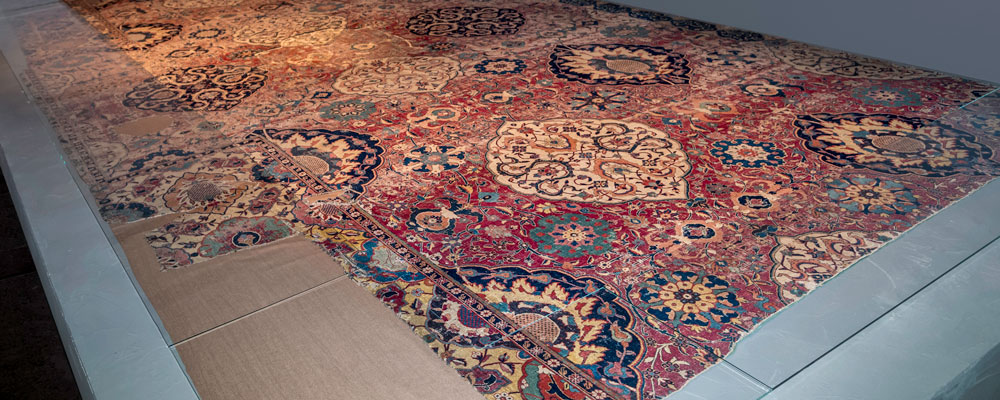
The primary Sarajevo ‘vase-technique’ carpet, the largest of all, comprises two surviving fragments. National Museum of Bosnia Herzegovina, 2111/I, a
Jenny Housego visited Mahan in 1975. She did not see the fragments, but on the basis of Popović’s 1955 reconstruction of the large carpet she drew a plan in which the largest fragment fitted exactly into the shrine interior along the longer side of the cenotaph. However, she could not work out how the other sections fitted into the room, so she assumed that the cenotaph was surrounded either by two large carpets or by four carpets—two longer ones, like the reconstruction, and two much shorter.’
Read the full article in HALI 197.



















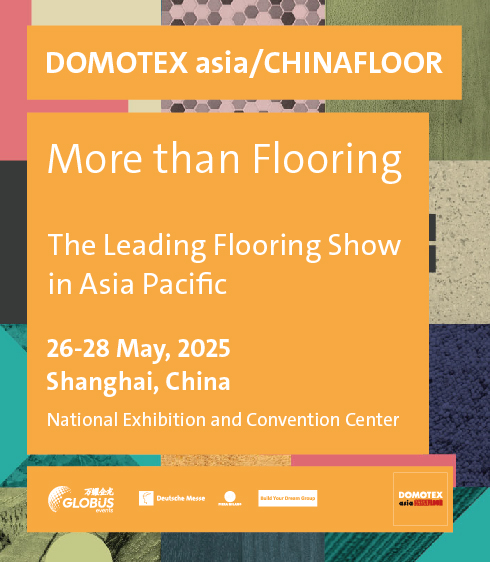







Comments [0] Sign in to comment